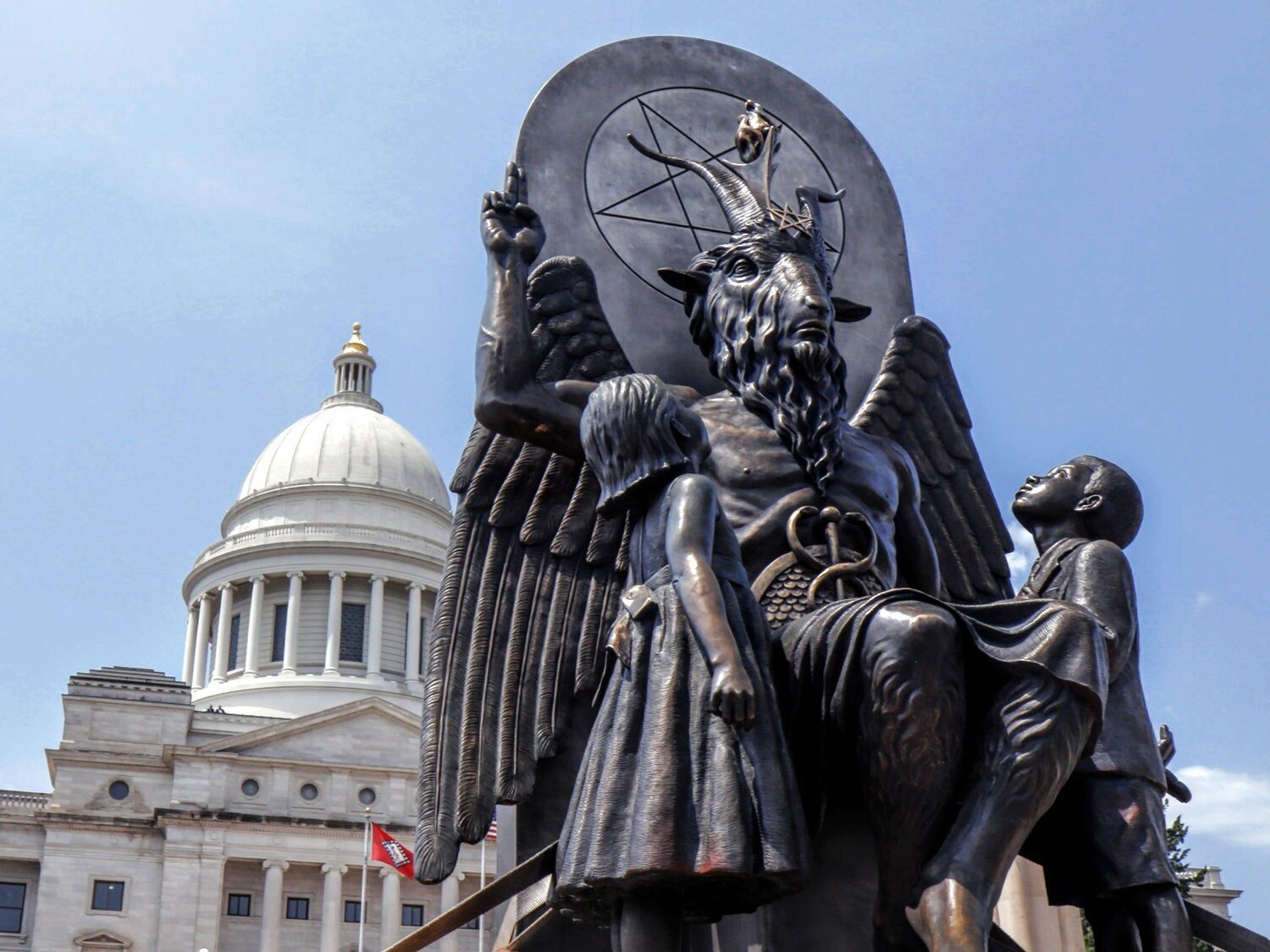Political Satanism and Abortion Rights
cw: anti-abortion rhetoric and imagery
Image: Georgia Bulletin
Discourse around abortion rights has long been inflected by colonial Christian moral values. The Evangelical right (a faction within Christian conservatism) is credited with singlehandedly turning abortion from an unspectacular medical procedure to a political lightning rod in the United States. Undergirding anti-abortion politics is the idea that abortion is an act of evil in the eyes of God; apparently, pro-choice politics is Satan’s domain.
Satan as the Colonial Other
Satan is a figure representing evil in Abrahamic religions. In Christianity, Satan is the counterfigure to both Christ and God, and is invoked as an abstraction of immorality. The negative qualities that Satan embodies become all that God and Christianity eschew.
The socio-cultural understanding of Satan pairs the abstracted meaning of evil with the visual reference of Pan, the Greek god of the wild. Pan, a satyr with horns and hooves, was a part of the Ancient Greek mythological, pagan ensemble alongside gods like Zeus and Poseidon. Pan reigns over the untamed world that is unreached by the moral constructs of Man. As such, he is associated with fields, forests, blooms, fertility, sex, and spring.
Using the visual iconography of pagan religion and creating Satan as the stand-in for all that is rejected in a colonial Christian worldview, there is a case to be made that Satan operates as a figure of marginality, a colonial Other. In the power schema of the Christian world order, Satan is at the bottom (literally), rejected from all social power and denigrated through direct comparison to those at the top. In colonial Christianity (the application of Christianity for colonialism, imperialism, and other social domination), Satan has become a useful metaphor as the moral point that colonial Christianity pits itself against. Satan, as the colonial Other, parallels a representation of the populations that Western colonialism sought/seeks to assimilate or wipe out.
Image: Vovatia Wordpress
Image: Alasdair Forsythe
Through this lens, Satan is not simply understood as the binary evil to God’s binary good, but also a metaphorical vessel for that which Christians disagree with, including political stances. Satan can be understood as all that the hegemony of colonial Christianity dismisses as “deviant,” “sinful,” or “wrong.” (Today, this puts him in the company of queer people, abortion, and comprehensive sex education.) Satan does not simply represent immorality, he also represents the “Other” that colonial Christianity uses to form a social hierarchy. Who should hold power, who is considered deviant, and who is seen as fully human are all questions that the construct of Satan is wielded to answer.
Satan thus represents the nexus between religious moral rhetoric and politics. When the Evangelical right argues that God renounces abortion, religion is being wielded in the arena of politics, not the other way around. Christian, conservative discourse in the U.S. has long provided explicitly political frameworks such as “pro-life,” anti-evolutionary biology, school prayer, etc. These movements utilize religious moral codes and apply them in the political world. Yet, the application of colonial Christian values in conservative politics actually provides the opportunity to consider how the political framework of Satan and Satanism might work for progressive politics.
The Satanic Temple: Nontheistic Satanism in a Religious-Political Scene
The Satanic Temple (not to be confused with the Church of Satan) is a contemporary example of Satanism as a political framework. Founded in 2013, the Satanic Temple’s mission is “To Encourage Benevolence And Empathy, Reject Tyrannical Authority, Advocate Practical Common Sense, Oppose Injustice, And Undertake Noble Pursuits.” Though classified as a “religious group,” the Temple is “nontheistic” and strongly emphasizes the principles of reason, science, and justice. Through performance activism, community building, and occult-style public demonstrations, the Satanic Temple has become known for opposing the Christian right by bringing into stark relief how organized Christian institutions are exerting political power, especially in the case of abortion.
By positing themselves as a religious group asking for fair treatment under the First Amendment, the Satanic Temple calls attention to colonial Christianity’s interference in U.S. policymaking. Famously, the Temple donated a statue of a pagan icon who resembles Satan, himself, to be displayed alongside a statue of the Ten Commandments (donated by State Representative Mike Ritze) in front of the Oklahoma State Capitol. It seems pretty silly to have a satanic statue of Baphomet, the pagan idol of the Knights Templar, in front of an official government building -- but it’s just as problematic under the U.S. Constitution for Christian icons to appear in such a place.
Image: WIRED
Using the same texts and references as the Christian right (the overarching name for conservative politics led by Christian factions and beliefs), the Satanic Temple showcases the political power of a religious group in a country that purportedly separates Church and State. This is especially obvious through the case of abortion, one of the Temple’s primary focuses. Through their performance activism, the Satanic Temple asks its audience to question “why should this religious organization have any impact on government policy that affects me and my body?” As a result, they undermine the Christian right’s campaign to control bodies and personal medical decisions.
The abortion rights campaign within the Temple was primarily led by Jex Blackmore, a “practicing Satanist” and activist. Blackmore explained her relationship to Nontheistic Satanism a few years ago, writing “today, conservative fear-mongers, many of whom hold positions of power (the President, senators, civic leaders) use the term “Satanic” or “evil” to manipulate points of social and cultural transformation (think same sex-marriage, abortion, LGBTQ rights, divorce, etc.). If you are a freethinking, godless individual, many of these people who represent you in your local government would consider you too, a Satanist.” At the Temple, Blackmore was a spokesperson and performance artist focused on moral religious rhetoric, sexuality, and political policy.
Jex Blackmore. Image: Pinterest.




